Abstract
Toxicity testing in AS52 cells (24-hr exposures) gave LC50 values of 2 to 130 micrograms Ni/ml for particulate nickel compounds and 45 to 60 micrograms Ni/ml for water-soluble salts (NiCl2, NiSO4, Ni(CH3COO)2). The Ni(OH)2, NiCO3, and sulfides (Ni3S2, Ni7S6, "amorphous NiS") exhibited similar toxicities (LC50's of 2 to 8 micrograms Ni/ml), while three nickel oxides were more variable and less toxic (LC50's of 18 to 130 micrograms Ni/ml). Most compounds displayed nuclear to cytoplasmic nickel ratios of approximately 1:1.5 to 1:5 (except approximately 1:20 for nickel salts). At the LC50's, a 75-fold range in exposure levels occurred compared to a 10-fold range in cytoplasmic and nuclear nickel concentrations, [Ni]. Cellular nickel distribution indicated three groupings: inert compounds (green NiO, lithium nickel oxide, relatively low nuclear and cytosolic [Ni]); water-soluble salts (very low nuclear [Ni]; high cytosolic [Ni]), and slightly soluble compounds (relatively high cytosolic and nuclear [Ni]). Nickel compounds are considered to be only weak or equivocal mutagens. In this study, a low but significant increase in mutation rate at the gpt locus was shown. Although the results would not be sufficient to deem nickel compounds mutagenic by traditional criteria, characterization by PCR analysis indicated that the spontaneous and nickel-induced mutants exhibited different and compound-specific mutational spectra (thus confirming nickel compound involvement). The results reported illustrate some of the methodologic problems involved in testing "weak" mutagens and indicate that alternative approaches may be necessary in classifying the mutagenicity of nickel and other compounds.
Full text
PDF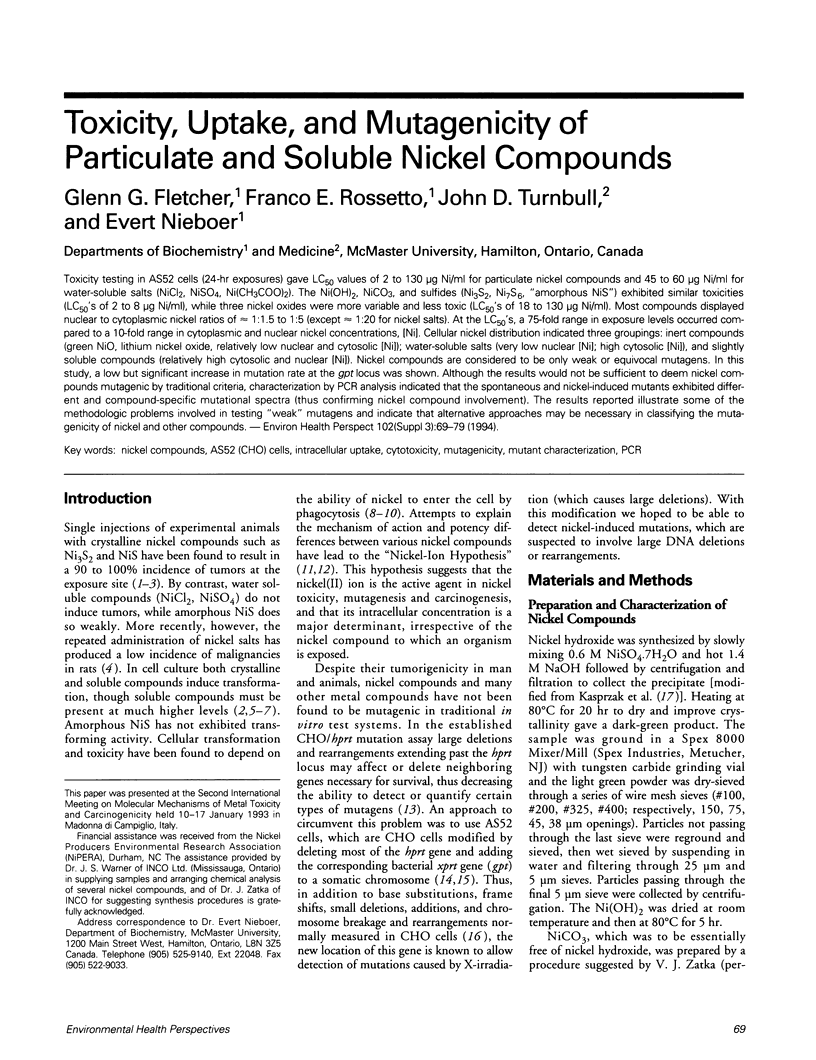
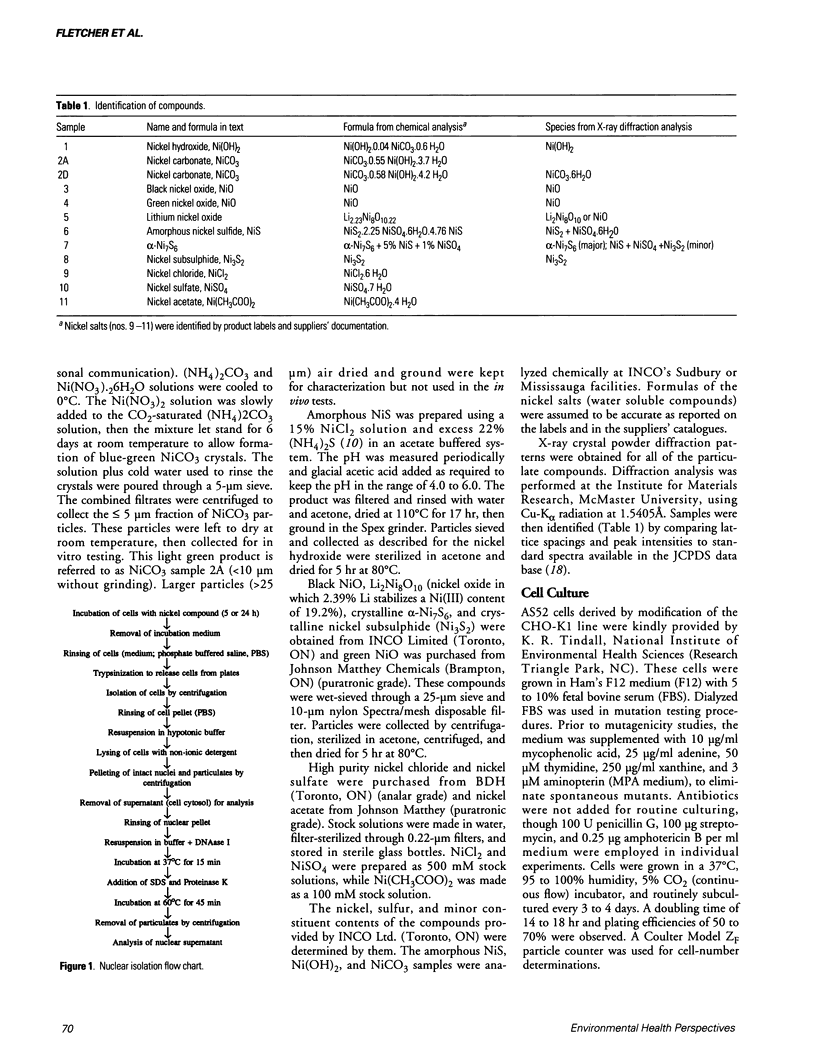
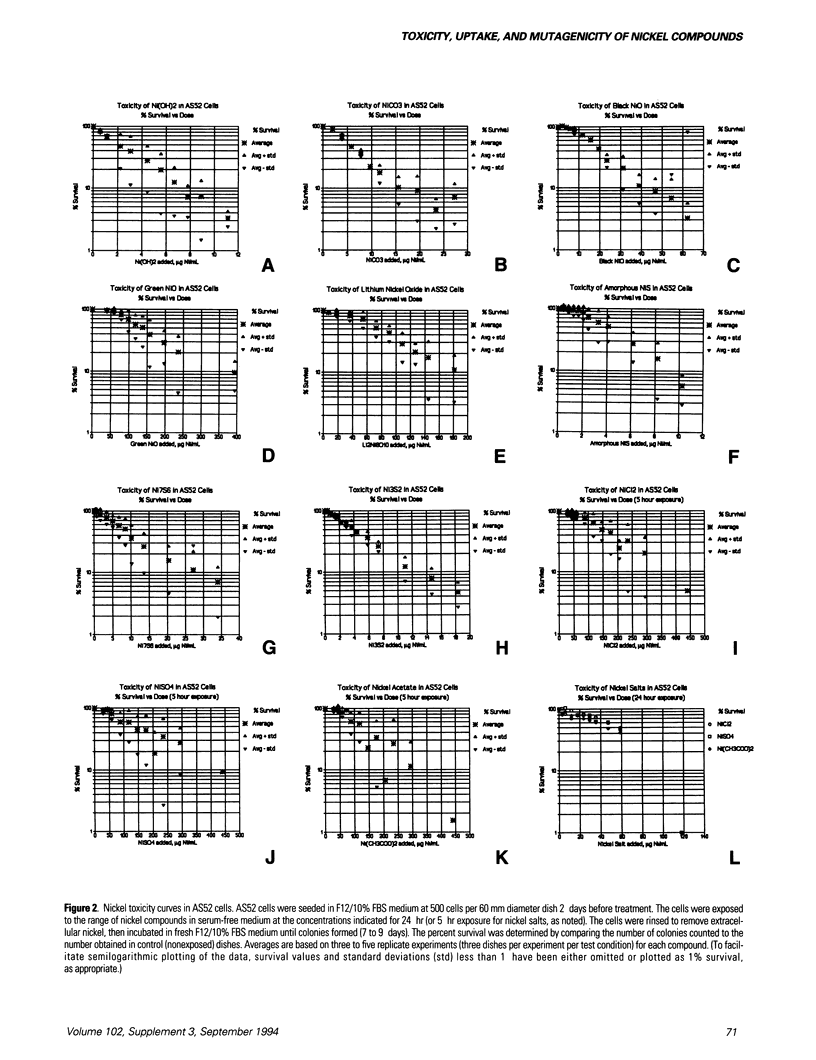
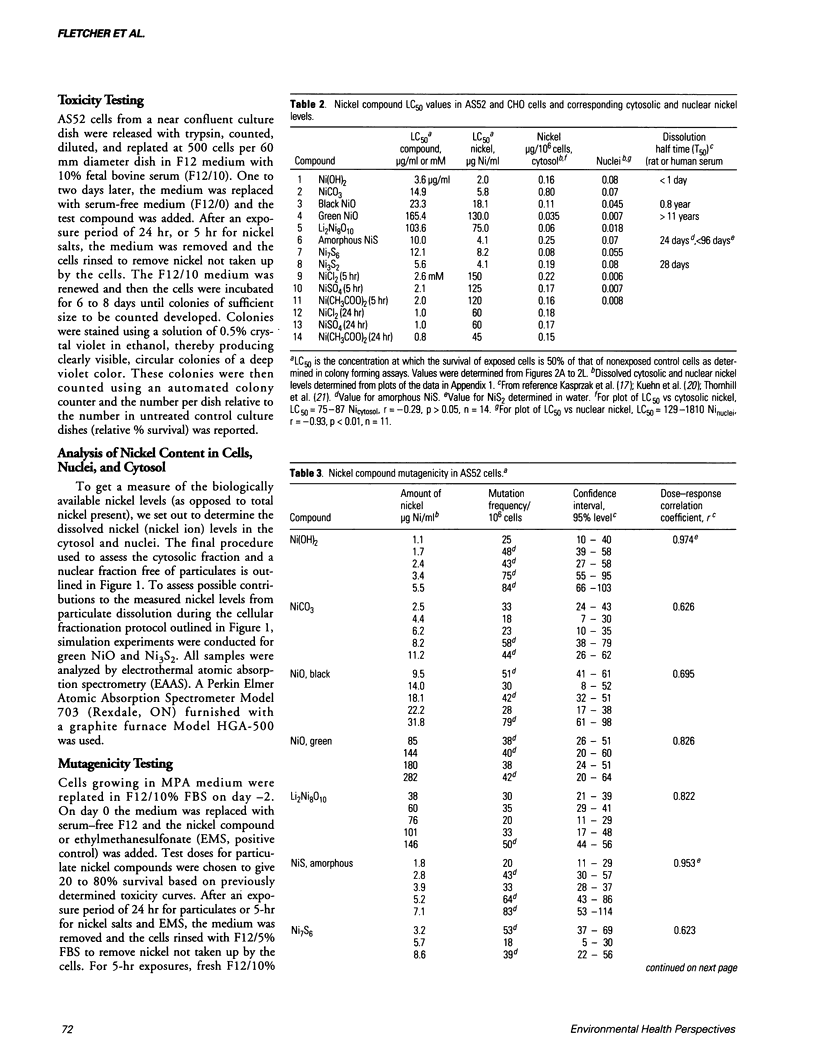
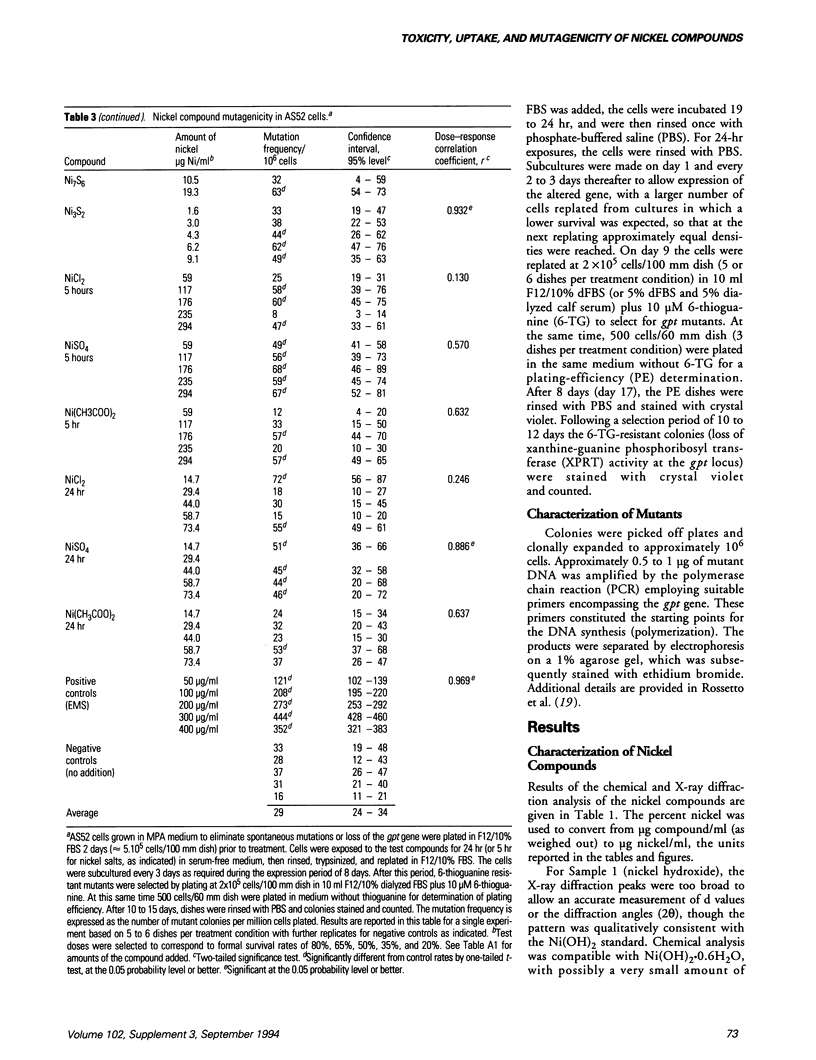
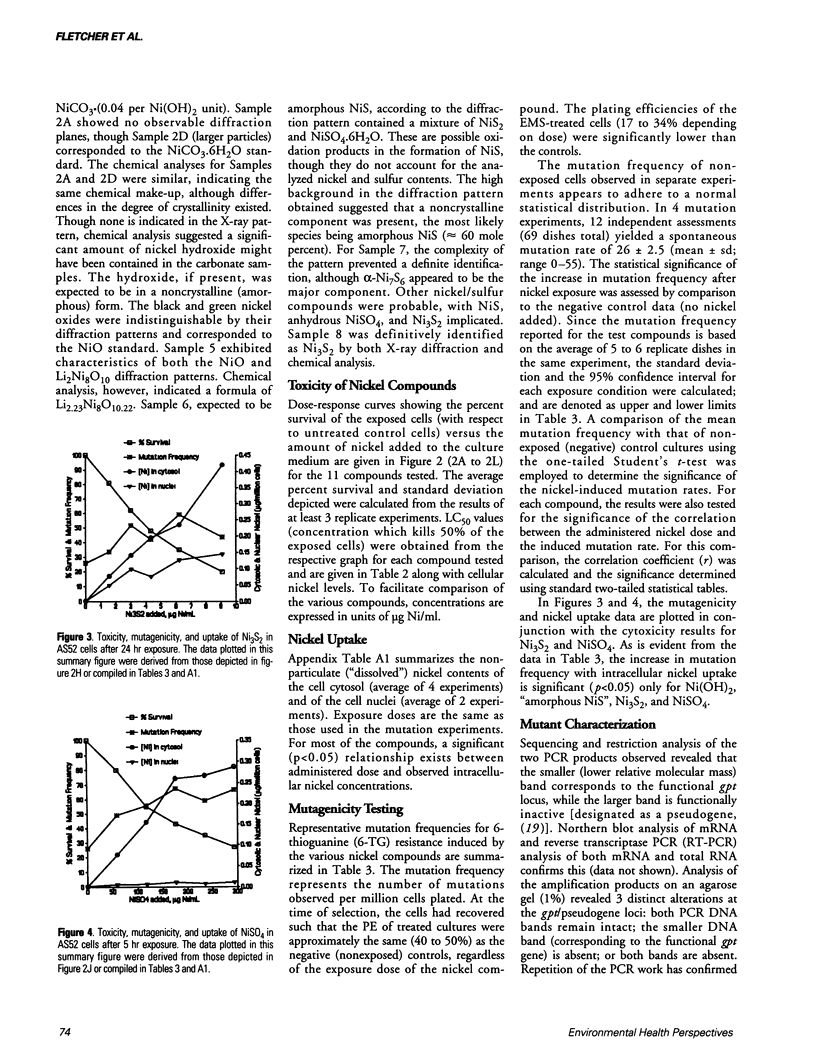
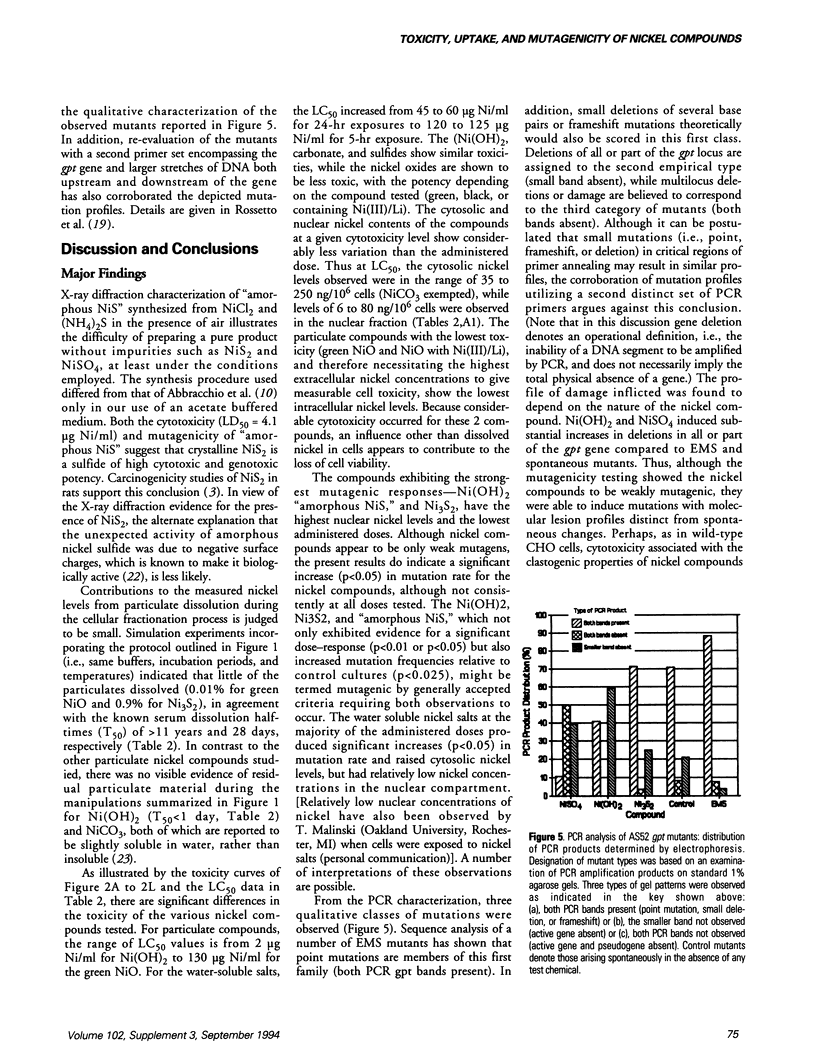
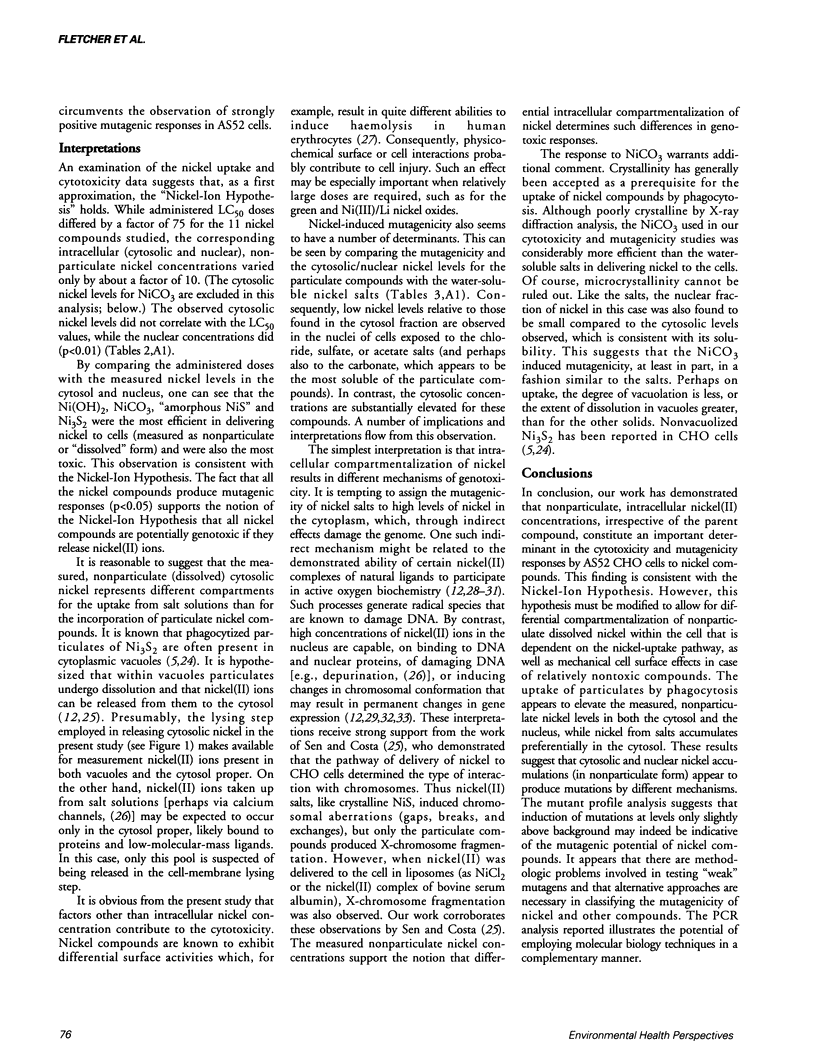
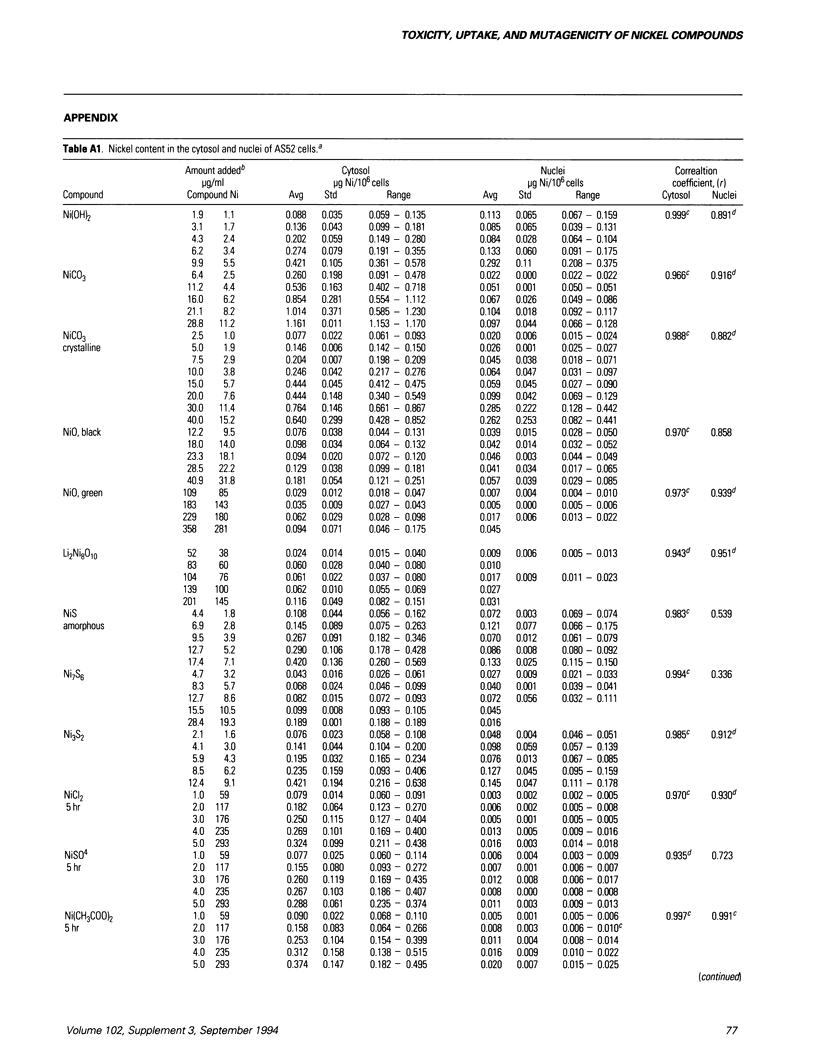
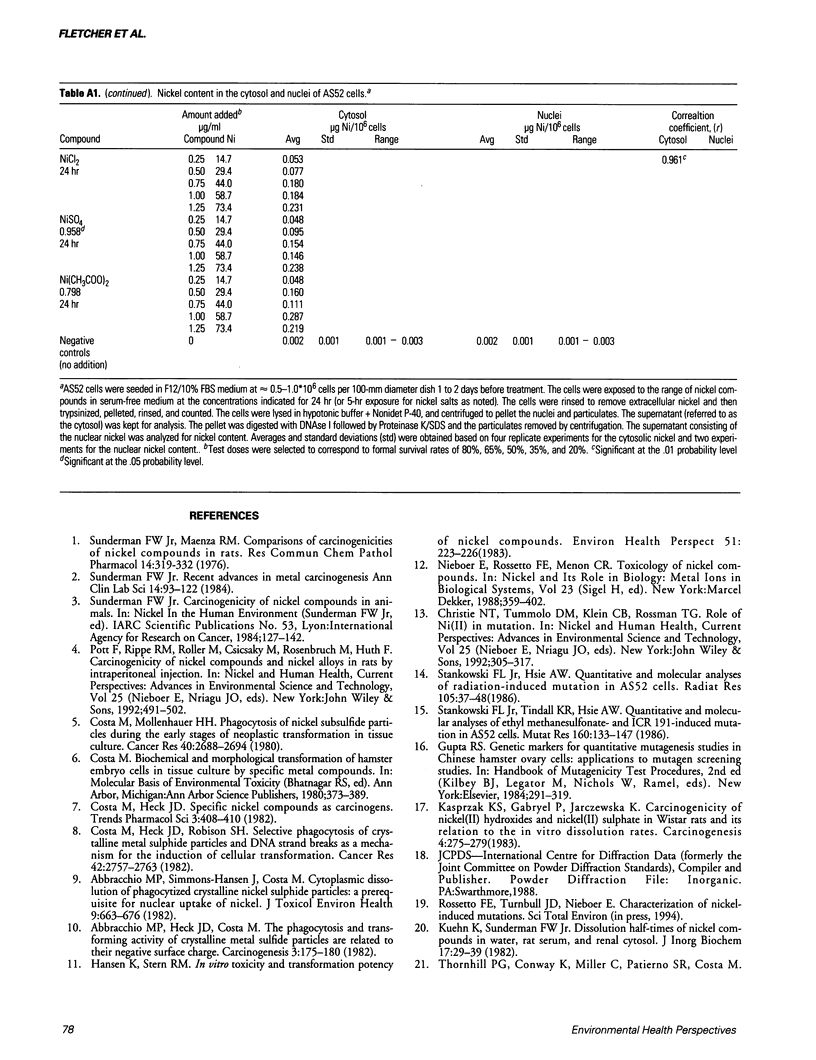
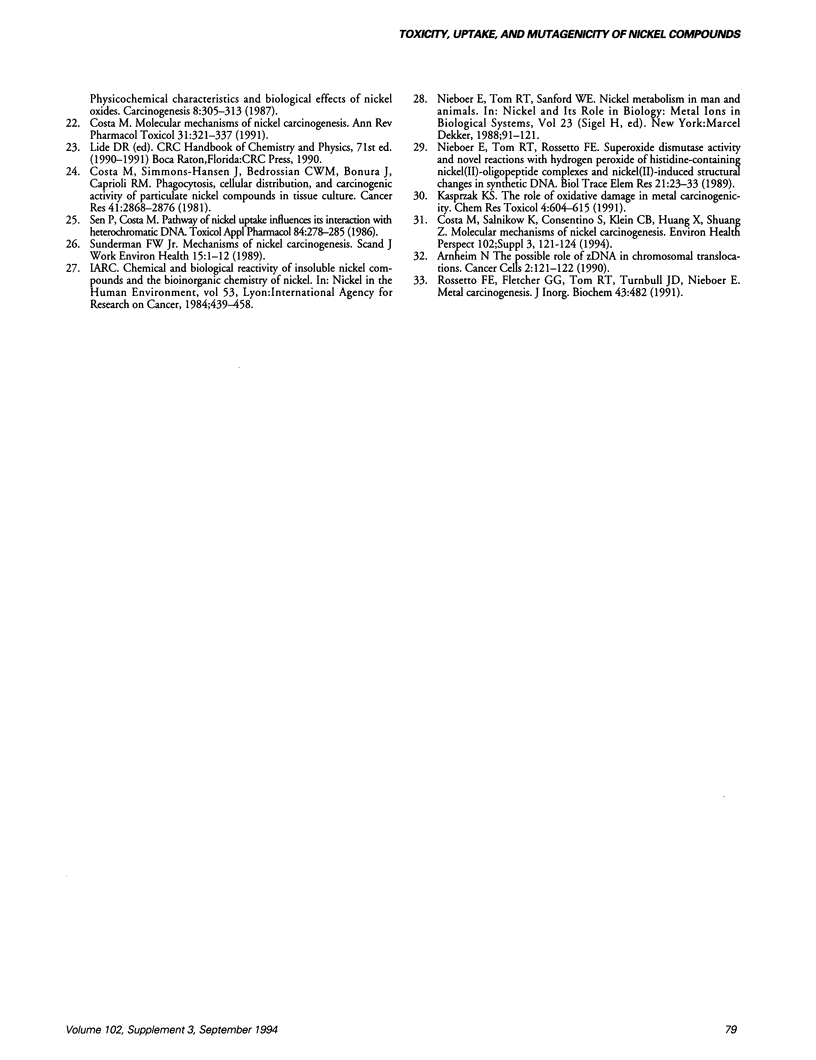
Selected References
These references are in PubMed. This may not be the complete list of references from this article.
- Abbracchio M. P., Heck J. D., Costa M. The phagocytosis and transforming activity of crystalline metal sulfide particles are related to their negative surface charge. Carcinogenesis. 1982;3(2):175–180. doi: 10.1093/carcin/3.2.175. [DOI] [PubMed] [Google Scholar]
- Abbracchio M. P., Simmons-Hansen J., Costa M. Cytoplasmic dissolution of phagocytized crystalline nickel sulfide particles: a prerequisite for nuclear uptake of nickel. J Toxicol Environ Health. 1982 Apr;9(4):663–676. doi: 10.1080/15287398209530194. [DOI] [PubMed] [Google Scholar]
- Arnheim N. The possible role of Z DNA in chromosomal translocations. Cancer Cells. 1990 Apr;2(4):121–122. [PubMed] [Google Scholar]
- Costa M., Heck J. D., Robison S. H. Selective phagocytosis of crystalline metal sulfide particles and DNA strand breaks as a mechanism for the induction of cellular transformation. Cancer Res. 1982 Jul;42(7):2757–2763. [PubMed] [Google Scholar]
- Costa M. Molecular mechanisms of nickel carcinogenesis. Annu Rev Pharmacol Toxicol. 1991;31:321–337. doi: 10.1146/annurev.pa.31.040191.001541. [DOI] [PubMed] [Google Scholar]
- Costa M., Mollenhauer H. H. Phagocytosis of nickel subsulfide particles during the early stages of neoplastic transformation in tissue culture. Cancer Res. 1980 Aug;40(8 Pt 1):2688–2694. [PubMed] [Google Scholar]
- Costa M., Simmons-Hansen J., Bedrossian C. W., Bonura J., Caprioli R. M. Phagocytosis, cellular distribution, and carcinogenic activity of particulate nickel compounds in tissue culture. Cancer Res. 1981 Jul;41(7):2868–2876. [PubMed] [Google Scholar]
- Hansen K., Stern R. M. In vitro toxicity and transformation potency of nickel compounds. Environ Health Perspect. 1983 Sep;51:223–226. doi: 10.1289/ehp.8351223. [DOI] [PMC free article] [PubMed] [Google Scholar]
- Kasprzak K. S., Gabryel P., Jarczewska K. Carcinogenicity of nickel(II)hydroxides and nickel(II)sulfate in Wistar rats and its relation to the in vitro dissolution rates. Carcinogenesis. 1983;4(3):275–279. doi: 10.1093/carcin/4.3.275. [DOI] [PubMed] [Google Scholar]
- Kasprzak K. S. The role of oxidative damage in metal carcinogenicity. Chem Res Toxicol. 1991 Nov-Dec;4(6):604–615. doi: 10.1021/tx00024a002. [DOI] [PubMed] [Google Scholar]
- Kuehn K., Sunderman F. W., Jr Dissolution half-times of nickel compounds in water, rat serum, and renal cytosol. J Inorg Biochem. 1982 Aug;17(1):29–39. doi: 10.1016/s0162-0134(00)80227-5. [DOI] [PubMed] [Google Scholar]
- Nieboer E., Tom R. T., Rossetto F. E. Superoxide dismutase activity and novel reactions with hydrogen peroxide of histidine-containing nickel(II)-oligopeptide complexes and nickel(II)-induced structural changes in synthetic DNA. Biol Trace Elem Res. 1989 Jul-Sep;21:23–33. doi: 10.1007/BF02917233. [DOI] [PubMed] [Google Scholar]
- Sen P., Costa M. Pathway of nickel uptake influences its interaction with heterochromatic DNA. Toxicol Appl Pharmacol. 1986 Jun 30;84(2):278–285. doi: 10.1016/0041-008x(86)90135-3. [DOI] [PubMed] [Google Scholar]
- Stankowski L. F., Jr, Hsie A. W. Quantitative and molecular analyses of radiation-induced mutation in AS52 cells. Radiat Res. 1986 Jan;105(1):37–48. [PubMed] [Google Scholar]
- Stankowski L. F., Jr, Tindall K. R., Hsie A. W. Quantitative and molecular analyses of ethyl methanesulfonate- and ICR 191-induced mutation in AS52 cells. Mutat Res. 1986 Apr;160(2):133–147. doi: 10.1016/0027-5107(86)90037-0. [DOI] [PubMed] [Google Scholar]
- Sunderman F. W., Jr Carcinogenicity of nickel compounds in animals. IARC Sci Publ. 1984;(53):127–142. [PubMed] [Google Scholar]
- Sunderman F. W., Jr, Hopfer S. M., Knight J. A., McCully K. S., Cecutti A. G., Thornhill P. G., Conway K., Miller C., Patierno S. R., Costa M. Physicochemical characteristics and biological effects of nickel oxides. Carcinogenesis. 1987 Feb;8(2):305–313. doi: 10.1093/carcin/8.2.305. [DOI] [PubMed] [Google Scholar]
- Sunderman F. W., Jr, Maenza R. M. Comparisons of carcinogenicities of nickel compounds in rats. Res Commun Chem Pathol Pharmacol. 1976 Jun;14(2):319–330. [PubMed] [Google Scholar]
- Sunderman F. W., Jr Mechanisms of nickel carcinogenesis. Scand J Work Environ Health. 1989 Feb;15(1):1–12. doi: 10.5271/sjweh.1888. [DOI] [PubMed] [Google Scholar]
- Sunderman F. W., Jr Recent advances in metal carcinogenesis. Ann Clin Lab Sci. 1984 Mar-Apr;14(2):93–122. [PubMed] [Google Scholar]


